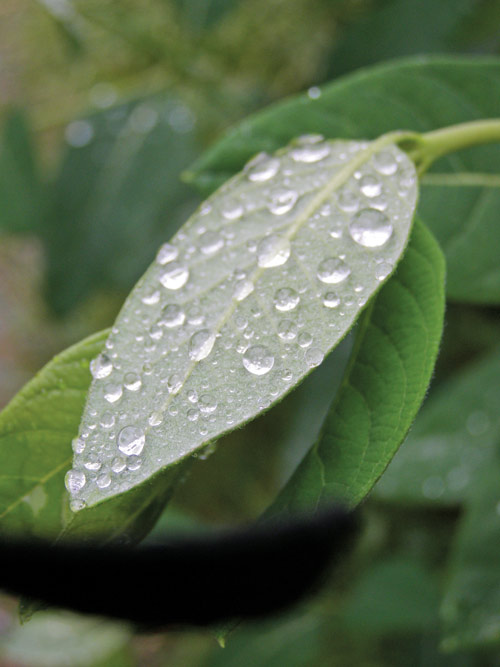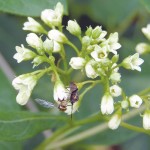Beauty and drama is where you find it!
Originally published June 5, 2008

By Ken Moore
Another reflection on catalpas!
Remember the Northern and Southern Catalpas? The taller, northern one flowers earlier than the broader, southern one. Last week, some of you may have inspected the southern one finishing its flowering, overhanging Weaver Street in Carrboro. Now the bigger, broader specimen set back on the cool green yard on the east side of MLK Blvd. near Timberlyne Shopping Center is just beginning to burst into flower. It’s possibly the grandest specimen in Orange County, worth a drive-by this weekend to see.
Why is it flowering later than its fellow trees on the downtown streets? Think about micro climates. It is impressive how just a few feet’s distance from the warming hard surfaces of roadways and other urban structures can alter the flowering patterns of plants. Be appreciative that here in our community two species of catalpa and fluctuations in microclimates give us almost two months of continuous catalpa flowering. Of course, you have to know where all these variables are growing to enjoy the full benefits; hopefully, you’ve been making mental notes of their locations during the last several weeks.
A common native weed worth a closer look!
During one of those gray, rainy days last week, I was mesmerized by the jeweled beauty of rain droplets on the surfaces of Indian Hemp leaves along my driveway. Some years ago, I was pleased to have a few plants volunteer in my side yard, around which I deliberately mowed, having learned that Apocynum cannabinum, also called dogbane, is a host plant for the monarch butterflies. The bed that runs the length of the tool shed is now a hedge of volunteer Indian Hemp. I’ve come to appreciate the architecture of the plant, with straight stems of opposite leaves, alternating at 90 degree angles.
Snap one of those leaves off and you immediately have a bleeding of thick, sticky, milky-white sap. It’s glue-like to the touch. Later in the season, you will find long silky fibers inside those stems. Indian Hemp is revered in Native American heritage for its numerous medicinal and utilitarian uses.
One of my favorite references, Herbal Remedies of the Lumbee Indians by Boughman and Oxendine describes harvesting the stems in October as a primary source of cordage material. The resulting carefully crafted strong twine and rope was used for fishing lines, deer nets, slings for small-game hunting, quilts, clothing and even moccasins.
I can never resist taking a closer look at the clusters of small white flowers in the top leaf axils of the stems. These flower clusters attract a great variety of insect pollinators. Recently, I noticed a rainbow colored reflection on the wing of a tiny pollinating sweat bee. I pulled out the camera to attempt a photograph and observed, to my surprise, that the sweat bee had been stunned and was apparently being drained of its insides by a larger and swifter predator. Life on a flower head is never boring! For every flower there is at least one pollinator. For every pollinator, there is at least one predator. Wow! The beauty and drama of life! Be a part of it!!!



Comments are closed.